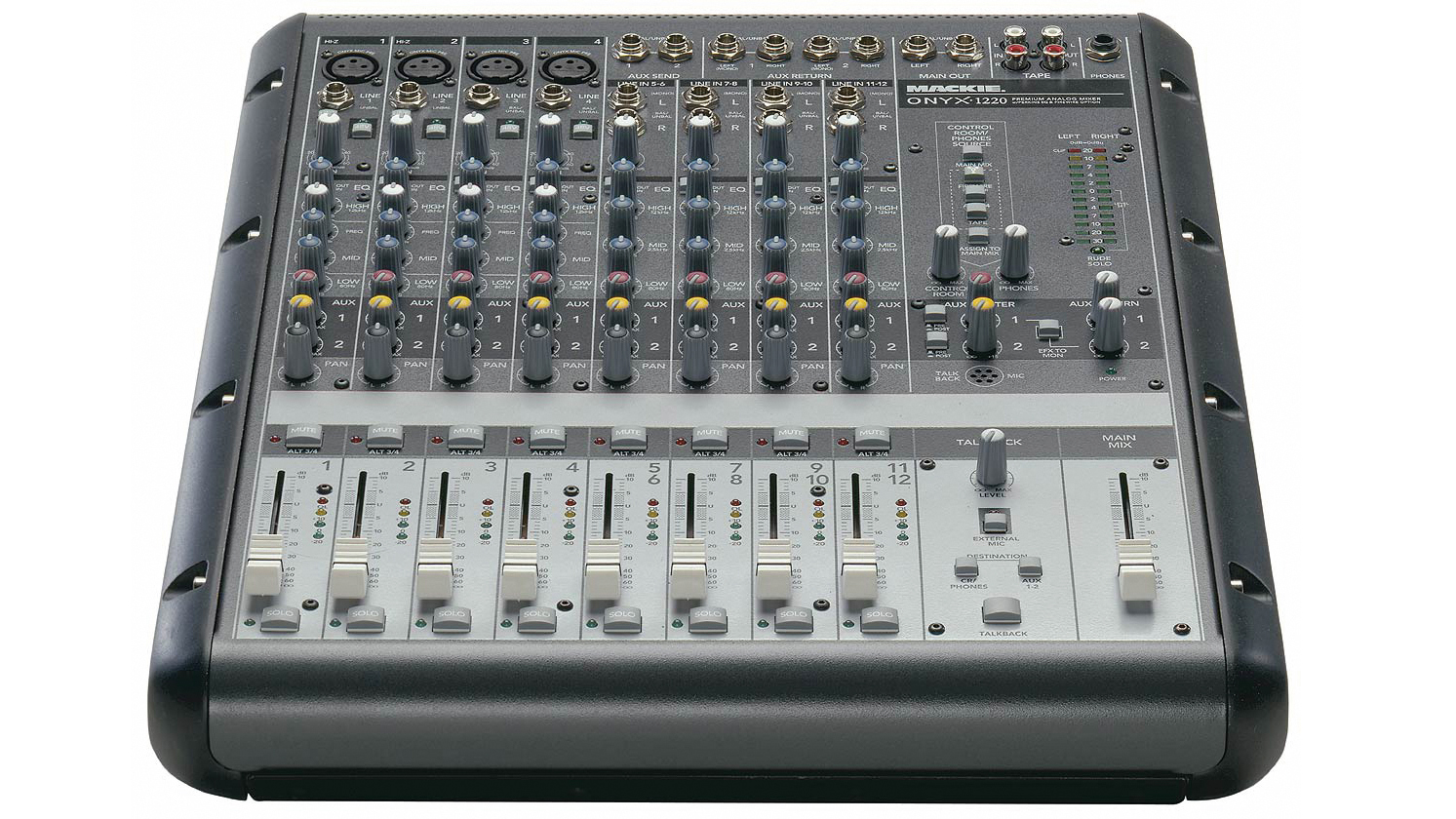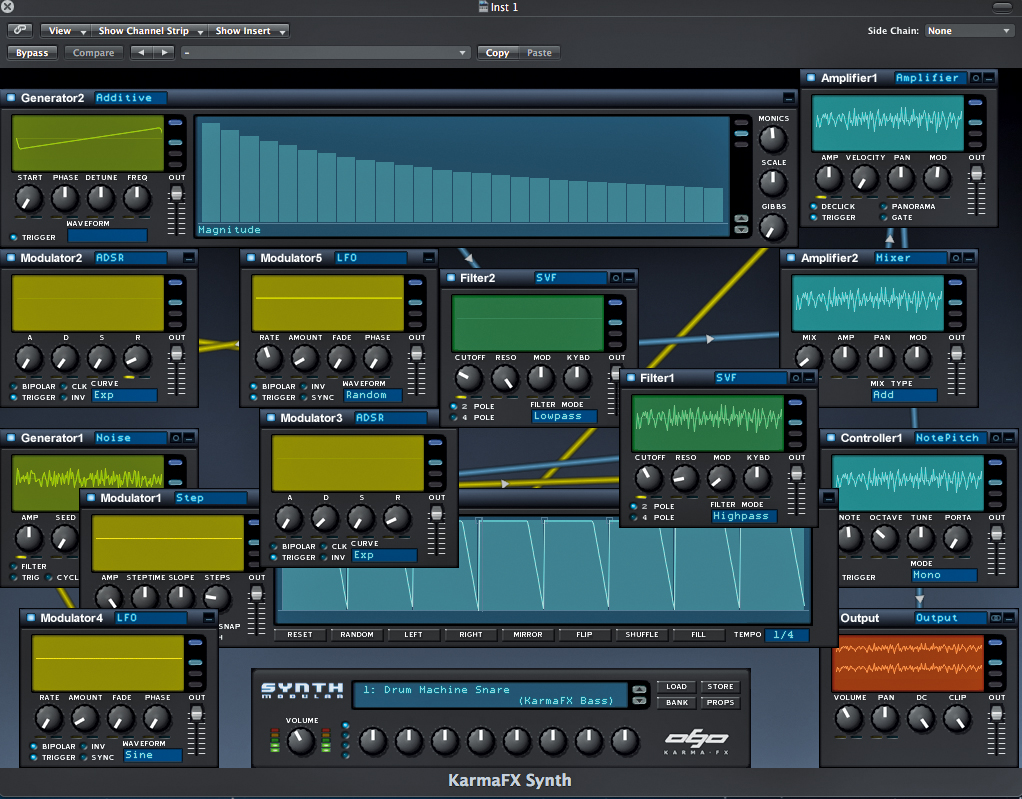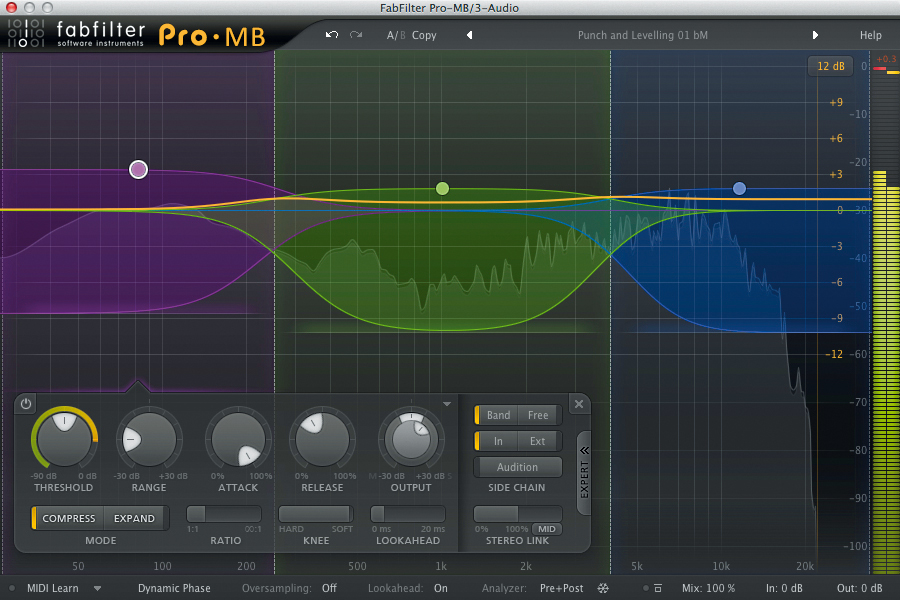The A to Z of computer music: M (part two)
More musical definitions as we return for the second half of the multi-part Ms

More musical definitions get demystified as we return for part two of the multi-part Ms. Check out part one here.
Mixer
Any device that combines two or more signals and sums them (adds them together) to a single output (and/or several sub-outputs) can be termed a mixer, but by far the most common mixers you'll come across are the project-controlling one in your DAW and the oscillator/sample blending ones in your synths and samplers.
The mixer in your DAW is a thing of truly incredible power compared to its hardware forebears, with no ceiling in terms of the number of channels and effects it can host, precision EQ and perhaps compression built-in, and limitless signal routing potential for creating subgroups and auxiliary effects loops.

Mixing
The bringing together and balancing of the individual tracks that make up a song is called mixing, and far from being just a technical or corrective exercise, it's an art form that requires understanding of the principles involved and a lot of practice.
At the most basic level, getting a mix together means setting volume levels for each sound and their positions in the stereo panorama, but that's really only the beginning.
EQ, compression, limiting, reverb, delay and all manner of other effects processors are called on during mixing in order to get your disparate track elements sounding like a cohesive piece of music with depth, character, punch and just the right frequency balance.
Mode
Dating back to the Middle Ages but with roots in ancient Greece, in music theory, the seven modes are a set of scale/key types, each comprising its own series of intervals and characteristic sound.
Get the MusicRadar Newsletter
Want all the hottest music and gear news, reviews, deals, features and more, direct to your inbox? Sign up here.
Named Ionian, Dorian, Phrygian, Lydian, Mixolydian, Aeolian and Locrian (after seven different peoples of the ancient Greek world), they're still used in many styles of music and are well worth investigating by anyone looking to go beyond the conventional major and minor scales - which are in fact the Ionian and Aeolian modes.
Multimode filter
The mode of an audio filter determines the range of frequencies that it attenuates beyond the cutoff point - a low-pass filter reduces frequencies above the cutoff, while a high-pass does away with those below it, for example.
A multimode filter, then, is simply one that can be switched between more than one mode, and you'll be hard pressed to find a modern filter plugin that doesn't offer at least low-, high- and band-pass modes.
Modular synthesis
In 1970, Moog Music changed the world of synthesis with the release of the Minimoog, the first self-contained, relatively portable analogue synthesiser. Prior to that, synths were entirely modular, with each component module (oscillators, filters, envelopes, sequencers, etc) constituting a discrete box of circuitry that required connecting to other modules via cables called 'patch cords'.
They were also enormous, heavy and expensive. Although the modular synth is still very much alive and kicking in both software and hardware forms, it would be accurate to say that fixed-path and semi-modular (in which a limited range of modules can be mixed and matched) instruments dominate the market.

Modulation/modulator
In simple terms, to modulate means to exert change over time, and in music technology, modulation is a key element of synthesis, sampling and effects processing.
Within your synth, sampler or effects plugin, a modulator, such as an LFO, envelope or MIDI Continuous Controller, can be assigned to control a target parameter, such as filter cutoff, oscillator frequency or pan position.
With an LFO running at 10Hz assigned to a filter's cutoff frequency, for example, said frequency will be moved up and down ten times a second, with the distance travelled in each direction determined by the modulation depth. How these assignments are made and depth-adjusted will depend on the instrument in question, but many soft synths do it via an interface called a 'modulation matrix', typically with menu-driven selection of sources/targets, and numeric entry of depth.
While modulation is a key feature of all synths, FM (frequency modulation) is a type of synthesis based entirely on the technique. With FM, each of up to eight pairs of digital oscillators combine to form 'operators', in which one oscillator (the modulator) modulates the frequency of the other (the carrier), often to create a characteristically hard, bright sound.
Other forms of modulation that you'll come across in synthesis are ring modulation (outputting the sum and difference of the frequencies contained in two signals), amplitude modulation (the level of one signal being controlled by the level of another) and phase modulation (modulation of the phase of a signal, also involved in FM).
Several types of effects processor - including phasers, flangers and chorus - are also based on modulation, with input audio signals shifted in time and/or pitch by LFOs, envelope followers or other audio signals.
Also read: The ultimate guide to effects: Modulation
Monitors/monitoring
A loudspeaker designed to facilitate critical listening and appraisal in the music studio, as opposed to the pure recreational listening of a 'domestic' playback system, is a monitor.
The technical difference between the two is that a monitor is built to be as flat and neutral-sounding as possible (for the price paid - in general, you pay more for greater accuracy), while most hi-fi speakers are made to flatter and 'improve' the sound.
Monitors come in many shapes and sizes, with the number and type of woofers, tweeters, mid-range drivers and ports on board varying. They all fall into one of two categories, though: active or passive. Active monitors have matched amplifiers built in (and thus cost more), while passives require amplification by a separate unit.

Mono
A mono (short for monaural) signal is one that only comprises a single channel, usually as a result of being recorded via a single microphone.
The stereo mixes of most modern music tracks actually comprise numerous mono sounds, each positioned within the stereo spectrum and processed with effects that put them in a stereo context of their own.
A mono sound is moved between the left and right channels of a stereo mix using the pan control on its mixer channel - when placed directly in the centre, it's represented equally in the left and right channels.
Stereo signals placed on stereo channels, on the other hand, may be balanced rather than panned - ie, the relative levels of their left and right component channels are adjusted.
Monophonic
A monophonic synthesiser is one that can only play one note at a time. Monophony was once a technological limitation that synth manufacturers raced to overcome, but although almost all hardware and software synths designed today are polyphonic, switching them to monophonic behaviour can be advantageous when playing bass parts and lead lines in particular, as many synths feature a 'glide' or portamento function for smoothly sliding the consecutive note pitches of a monophonic part into each other.
Millisecond
Abbreviated 'ms', a millisecond is a thousandth of a second, and it's a unit of measurement that you'll come across time and time again in music production. From audio interface latencies and channel offsets to compressor envelope speeds and delay times, time-based parameters within your DAW and its plugin instruments and effects are commonly set in milliseconds, hundredths of seconds and seconds.
Multiband
Any effects unit able to operate independently on multiple frequency ranges at once is a multiband processor. The most ubiquitous multiband effect is the multiband compressor, with which you can, for example, compress the low end of a mix heavily, while leaving the highs dynamically 'open'.
The width of the bands within a multiband unit are adjusted by moving the crossover frequencies between them, and each band has its own set of parameter controls with which to apply the particular effect.

Multieffects
An effects plugin offering more than one kind of processor within a single interface. Notable examples include Camel Audio CamelSpace (delay, filter, reverb and trance gate), PSP N2O (filters, EQ, delay, reverb, pitchshifting, distortion and more) and Sugar Bytes Artillery and Turnado (too many to list!)
Multisampled instrument
A collection of audio samples recorded, compiled and mapped in a sampler as a set, usually with the aim of 'virtualising' a real-world instrument as realistically as possible.
For example, to create a multisampled guitar, you'd record samples of every string on your guitar playing every possible note at a range of volume levels and perhaps via several playing techniques, then map those samples in your sampler with pitch corresponding directly to note position, and volume levels corresponding to velocity.
With today's computers boasting vast amounts of RAM and fast drives for handling high volumes of data, the current generation of multisampled instruments can reach multi-gigabyte sizes and sound staggeringly convincing in the hands of a skilled player or MIDI programmer.
Computer Music magazine is the world’s best selling publication dedicated solely to making great music with your Mac or PC computer. Each issue it brings its lucky readers the best in cutting-edge tutorials, need-to-know, expert software reviews and even all the tools you actually need to make great music today, courtesy of our legendary CM Plugin Suite.
“I’m looking forward to breaking it in on stage”: Mustard will be headlining at Coachella tonight with a very exclusive Native Instruments Maschine MK3, and there’s custom yellow Kontrol S49 MIDI keyboard, too
MusicRadar deals of the week: Enjoy a mind-blowing $600 off a full-fat Gibson Les Paul, £500 off Kirk Hammett's Epiphone Greeny, and so much more










